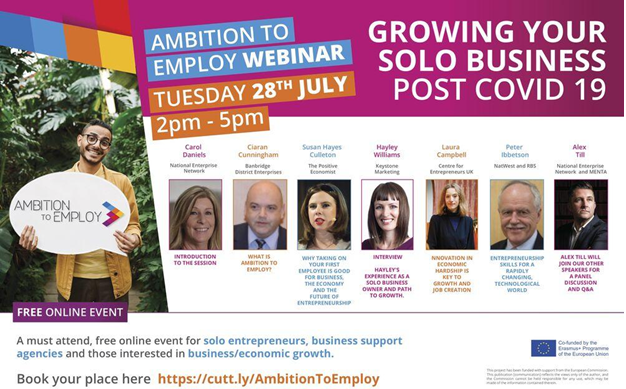The Seven Secret Questions that Every New Employer Secretly Ask Themselves (and how to answer them)
The Seven Secret Questions that Every New Employer Secretly Ask Themselves (and how to answer them)
On Tuesday 28th July, I had the opportunity to share some of my early experiences of taking on our first employee at Hayes Culleton. Sometimes, I had to cringe telling stories of the mistakes I made. Other times, I reflected on just how much I had to learn. I had unstated worries, fears and dreams that many new employers had.
Here they are (and what I learned along the way…)
- Am I a failure because I can’t keep up?
I’ve often felt this. The inbox blowing up, the feeling of never quite catching up, the worry of how to continue delivering exceptional customer service by frantically looking for extra hours in the day. I’ve wondered what I was doing wrong and what changes I need to make in my life to become ever more productive. Thankfully, this phenomenon was not a sign of failure but that of success. My business was growing with more customers and with that, more things to do. This was good! The signs were pointing towards taking on staff to help cohesively increase our capacity to take on new business.
If you want to assess your readiness to take on your first employee, check out the Ambition to Employ Self Assessment tool.
- What if the person I take on runs out of work… what do I do if they run out of work?
We as employers often think we have lots of work for another person to do, but that can be a mirage borne out of feeling overwhelmed over our own workload. On the other hand, we can also be afraid that we won’t have enough work for another person to do, and worry that we would be using our hard-earned money to pay them to do nothing! In fact, you can swing from one of these worries to the other on the same day! To deal with this, take a step back and look at everything you’re doing. List the things that you could delegate and question if this could free up ongoing capacity for you or build in extra capability. (To solve this problem, I recommend Rory Prendergast's book The Game Changer Formula).
This is also when you start shaping a job description.
- How will I afford this…. It’s the equivalent of a mortgage?
One of the major barriers we can feel about taking on an employee is the feeling of quasi-liability hanging around your neck. There are two things you can do here. First, structure the job in such a way where there is flexibility on both sides. You can pay an hourly rate (subject to a minimum number of hours for the employee), offer a six-month contract with a view to making a more formal offer afterwards or even develop a small network of subcontractors. Second, develop a cashflow projection for your business. This is one of the most anxiety-reducing things that we’ve ever done! Start with your current bank balance. On a spreadsheet, write what you expect to come in and what you expect to go out in order of date. Next, put in the amount that a staff member would cost you and observe how your cashflow would be impacted. Finally, add in incremental benefits that you would expect your employee would add to the business. This way, you will be in a better position to make a sound decision.
Also, check out the Ambition to Employ module “What resources will you need to take on your first employee?”.
- How could I practise?
If you haven’t done it before, managing people can project you into a whole new world that requires different skills for managing customers, projects and deadlines as a solopreneur. The “Managing Talent” module of the Ambition to Employ resource set is very helpful. You can also practise with some dress rehearsals. For example, take on a virtual intern who could work with you remotely for several weeks. To do this, you could partner with an agency to offer a student some experience with you and benefit from some reverse mentoring, like CAPA or Career Training Internships. You could also enrol in Erasmus for Young Entrepreneurs, an EU-funded initiative aimed at enabling new businesses the opportunity for novel experiences in working with people and expanding their international networks.
- Would it just be quicker to do this myself?!
Oh, how often has the new manager conjured up this thought! You give a task to an employee with the impression that you’ve done so with crystal clear directions…and end up getting a completely different outcome that requires you to put in the same (or more!!) time than it would have taken for you to do it yourself. Rather than berating yourself, the other person or anybody else in this situation, take a deep breath. Ask your employee their understanding of your instructions, then build a bridge of understanding.
- What if they can’t do it as well as me?
- Why didn’t I do this before? Should I take on several?
Things can work out pretty well when your early staff members take work off your plate or add value in their own way. You will be super enthusiastic and will want to take on more very soon after. I suggest that you get used to having the first person well-embedded into the company first. I say this because you will soon move into a world where you need to create a culture, a sense of interdependence between employees and being politically aware of how you manage people together.
If you want to look into this more, check out “The Leadership Pipeline” as this book explains all about the different phases of leading people. Also, the Ambition to Employ resource "Building a team of Two +" spells out what you need to consider and do at this stage.







